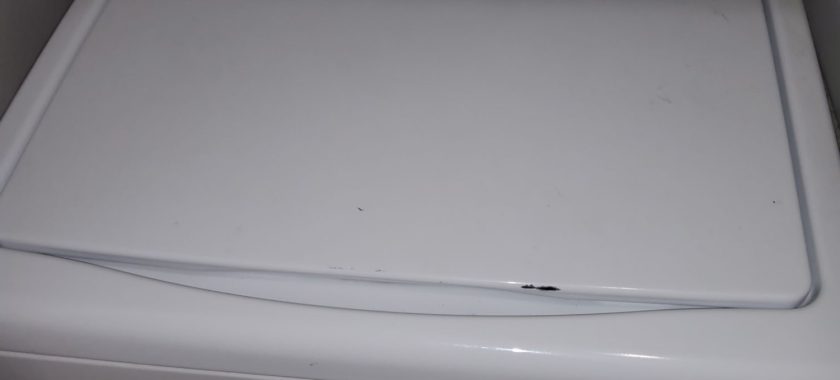A washing machine is designed to make laundry day easier, not louder or more chaotic. So, when your appliance starts shaking, banging, or moving across the floor, it’s a clear sign that something is wrong. Excessive vibration is one of the most common complaints among washing machine owners. While it might seem like a minor nuisance at first, it can lead to serious problems if not addressed — including damage to internal components and even the surrounding floor.
Two of the most common causes of excessive vibration are an unbalanced load and worn shock absorbers. Understanding how these issues develop and how to fix them can help you prevent costly repairs and extend the life of your washer.
Unbalanced Load: A Common but Easily Fixed Problem
When your washing machine starts shaking violently during the spin cycle, an unbalanced load is often the first thing to check. This occurs when clothes inside the drum are not distributed evenly, causing the drum to spin unevenly.
For example, washing a heavy blanket with a few small items can create an imbalance. The weight of the blanket will gather on one side of the drum, throwing off its balance. The machine compensates by spinning harder or slower, leading to loud vibrations or even stopping mid-cycle.
Signs of an unbalanced load include:
- The machine thumps or shakes excessively during spin cycles.
- The drum stops spinning and displays an error code.
- The washer “walks” or shifts from its original position.
How to fix it:
- Pause the cycle. Stop the washer and open the door once it’s safe.
- Redistribute the clothes. Evenly arrange items inside the drum. Avoid washing single heavy items alone.
- Use the right load size. Overloading or underloading the washer can both cause imbalance.
- Check level placement. Ensure the washing machine stands on a flat, stable surface. Adjust the feet if needed.
Sometimes, the issue can persist even with balanced loads. That’s when the problem may point to internal components — particularly the shock absorbers.
Worn Shock Absorbers: The Hidden Cause of Constant Vibration
Your washing machine’s shock absorbers are designed to dampen the drum’s movement during spinning. They play a critical role in maintaining stability and reducing vibration. Over time, however, these absorbers can wear out, especially with frequent heavy loads or older machines.
When the shock absorbers fail, the drum loses its ability to remain steady during spin cycles, resulting in violent shaking and noise.
Common symptoms of worn shock absorbers include:
- Loud banging or rattling noises during spin cycles.
- The drum feels unusually loose when you move it by hand.
- The machine vibrates even with small, balanced loads.
- Visible wear or oil leakage near the absorber mounts.
How to address this problem:
Replacing worn shock absorbers is not a simple DIY fix for most homeowners. The repair typically involves removing panels, accessing the suspension system, and fitting new absorbers securely. Attempting this without proper tools or knowledge can lead to further damage. It’s best to call a professional technician to diagnose and replace the worn parts properly.
Other Contributing Factors to Excessive Vibration
While unbalanced loads and worn shock absorbers are the most common culprits, there are other issues that can contribute to excessive vibration:
- Uneven floor surface:
If your washer sits on a slanted or flexible floor, it can amplify vibrations. Always install washers on solid, level flooring.
- Worn suspension springs:
These work alongside the shock absorbers to keep the drum stable. If they’re stretched or broken, the machine will shake.
- Damaged drum bearings:
When bearings wear out, they can cause wobbling during rotation. You might also notice grinding noises.
- Shipping bolts not removed:
New washers come with transport bolts to keep the drum secure during delivery. Forgetting to remove them before installation can cause severe vibration.
Regular maintenance checks can help you catch these issues early before they cause significant damage or shorten your appliance’s lifespan.
How to Prevent Excessive Vibration
You can minimize vibration and keep your washing machine running smoothly with a few preventive steps:
- Check the load balance every cycle. Make sure clothes are evenly distributed before starting the spin cycle.
- Avoid overloading. Follow the manufacturer’s recommended capacity for your washer model.
- Level the machine. Use a bubble level to ensure all four feet are touching the floor evenly.
- Schedule regular maintenance. Professional servicing helps detect worn components before they fail.
When to Call a Professional
If you’ve balanced your loads, leveled your washer, and it still shakes excessively, it’s time to call an expert. Ignoring these vibrations can lead to serious internal damage, including broken suspension components, leaks, or motor problems.
At Chula Vista Appliance Repair Company, our experienced technicians specialize in diagnosing and repairing all types of washing machine issues — including vibration problems caused by worn shock absorbers, unbalanced drums, or faulty suspension systems. We use genuine parts and professional tools to ensure your appliance operates quietly and efficiently again.
Don’t wait until the problem gets worse. Call Chula Vista Appliance Repair Company today to schedule your washer repair service and keep your laundry routine running smoothly.
Contact us
(619) 880-5508


